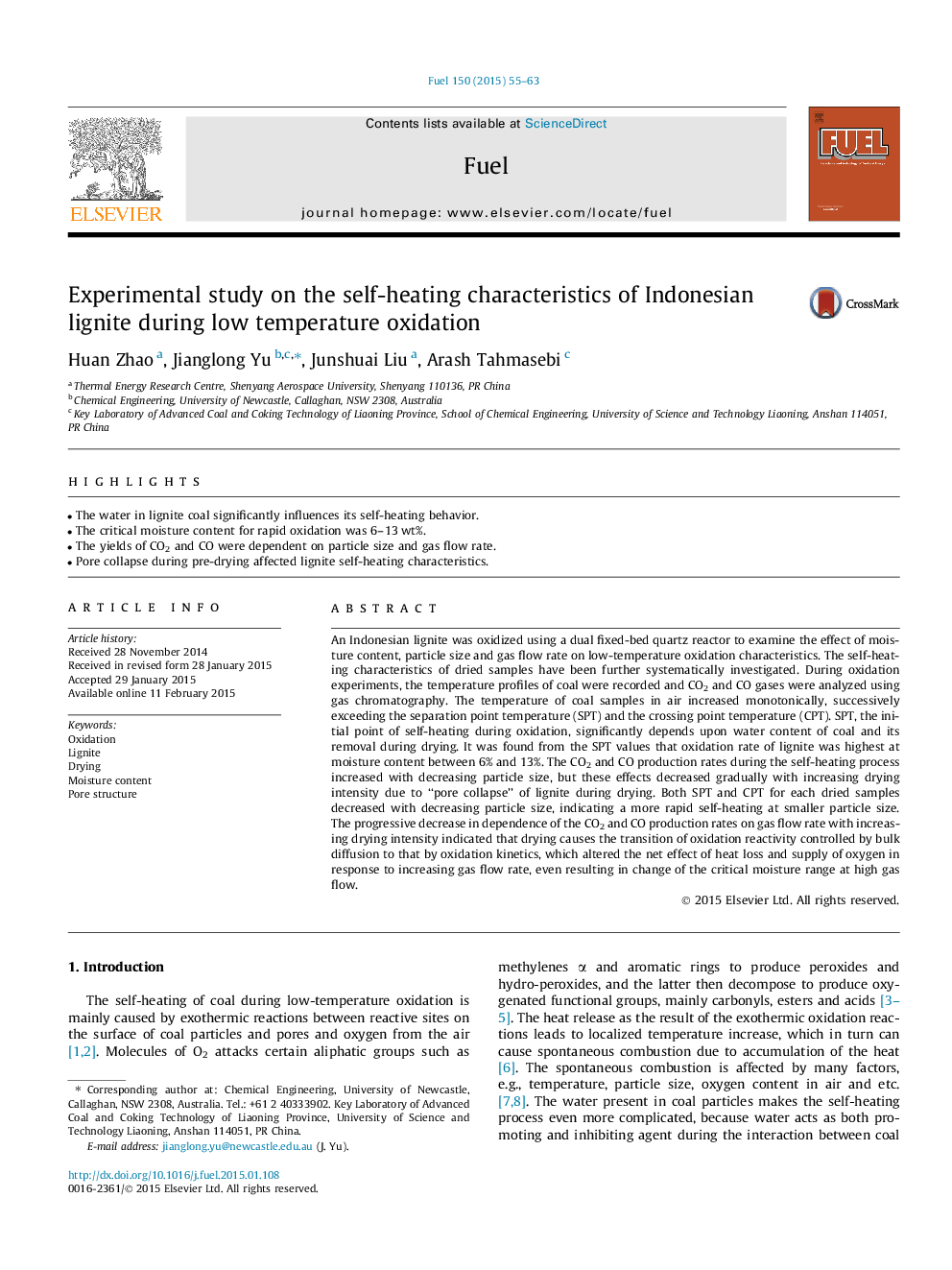| کد مقاله | کد نشریه | سال انتشار | مقاله انگلیسی | نسخه تمام متن |
|---|---|---|---|---|
| 205685 | 461123 | 2015 | 9 صفحه PDF | دانلود رایگان |
• The water in lignite coal significantly influences its self-heating behavior.
• The critical moisture content for rapid oxidation was 6–13 wt%.
• The yields of CO2 and CO were dependent on particle size and gas flow rate.
• Pore collapse during pre-drying affected lignite self-heating characteristics.
An Indonesian lignite was oxidized using a dual fixed-bed quartz reactor to examine the effect of moisture content, particle size and gas flow rate on low-temperature oxidation characteristics. The self-heating characteristics of dried samples have been further systematically investigated. During oxidation experiments, the temperature profiles of coal were recorded and CO2 and CO gases were analyzed using gas chromatography. The temperature of coal samples in air increased monotonically, successively exceeding the separation point temperature (SPT) and the crossing point temperature (CPT). SPT, the initial point of self-heating during oxidation, significantly depends upon water content of coal and its removal during drying. It was found from the SPT values that oxidation rate of lignite was highest at moisture content between 6% and 13%. The CO2 and CO production rates during the self-heating process increased with decreasing particle size, but these effects decreased gradually with increasing drying intensity due to “pore collapse” of lignite during drying. Both SPT and CPT for each dried samples decreased with decreasing particle size, indicating a more rapid self-heating at smaller particle size. The progressive decrease in dependence of the CO2 and CO production rates on gas flow rate with increasing drying intensity indicated that drying causes the transition of oxidation reactivity controlled by bulk diffusion to that by oxidation kinetics, which altered the net effect of heat loss and supply of oxygen in response to increasing gas flow rate, even resulting in change of the critical moisture range at high gas flow.
Journal: Fuel - Volume 150, 15 June 2015, Pages 55–63
